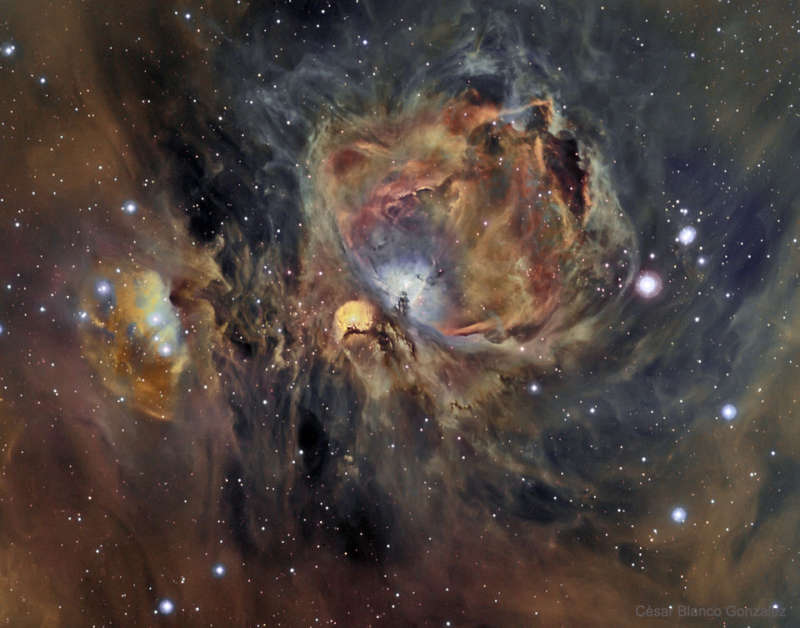
|
Credit & Copyright: C÷sar Blanco Gonz÷lez
Explanation:
Few astronomical sights excite the imagination like the
nearby stellar nursery known as the Orion Nebula.
The Nebula's glowing gas
surrounds hot young stars at the edge of an immense interstellar
molecular cloud.
Many of the filamentary structures visible in the featured image are actually
shock waves -
fronts where fast moving material encounters slow moving gas.
The Orion Nebula spans about 40
light years
and is located about 1500 light years away in the
same spiral arm
of our Galaxy as the
Sun.
The Great Nebula in
Orion can be found with the
unaided eye just below and to the left of the easily identifiable
belt of three stars in the popular constellation Orion.
The image shows the nebula in
three
colors
specifically emitted by
hydrogen,
oxygen, and
sulfur gas.
The whole Orion Nebula cloud complex,
which includes the
Horsehead Nebula,
will slowly disperse over the next 100,000 years.
|
January February March April May June July August September October November December |
| ||||||||||||||||||||||||||||||||||||||||||||||||
NASA Web Site Statements, Warnings, and Disclaimers
NASA Official: Jay Norris. Specific rights apply.
A service of: LHEA at NASA / GSFC
& Michigan Tech. U.
Based on Astronomy Picture
Of the Day
Publications with keywords: Orion Nebula
Publications with words: Orion Nebula
See also:
- APOD: 2025 August 13 ┴ Trapezium: In the Heart of Orion
- APOD: 2025 April 20 ┴ The Orion Nebula in Visible and Infrared
- APOD: 2024 November 4 ┴ M42: The Great Nebula in Orion
- APOD: 2024 September 10 ┴ Horsehead and Orion Nebulas
- Trapezium: At the Heart of Orion
- APOD: 2023 October 10 ┴ Hidden Orion from Webb
- Orion and the Running Man
